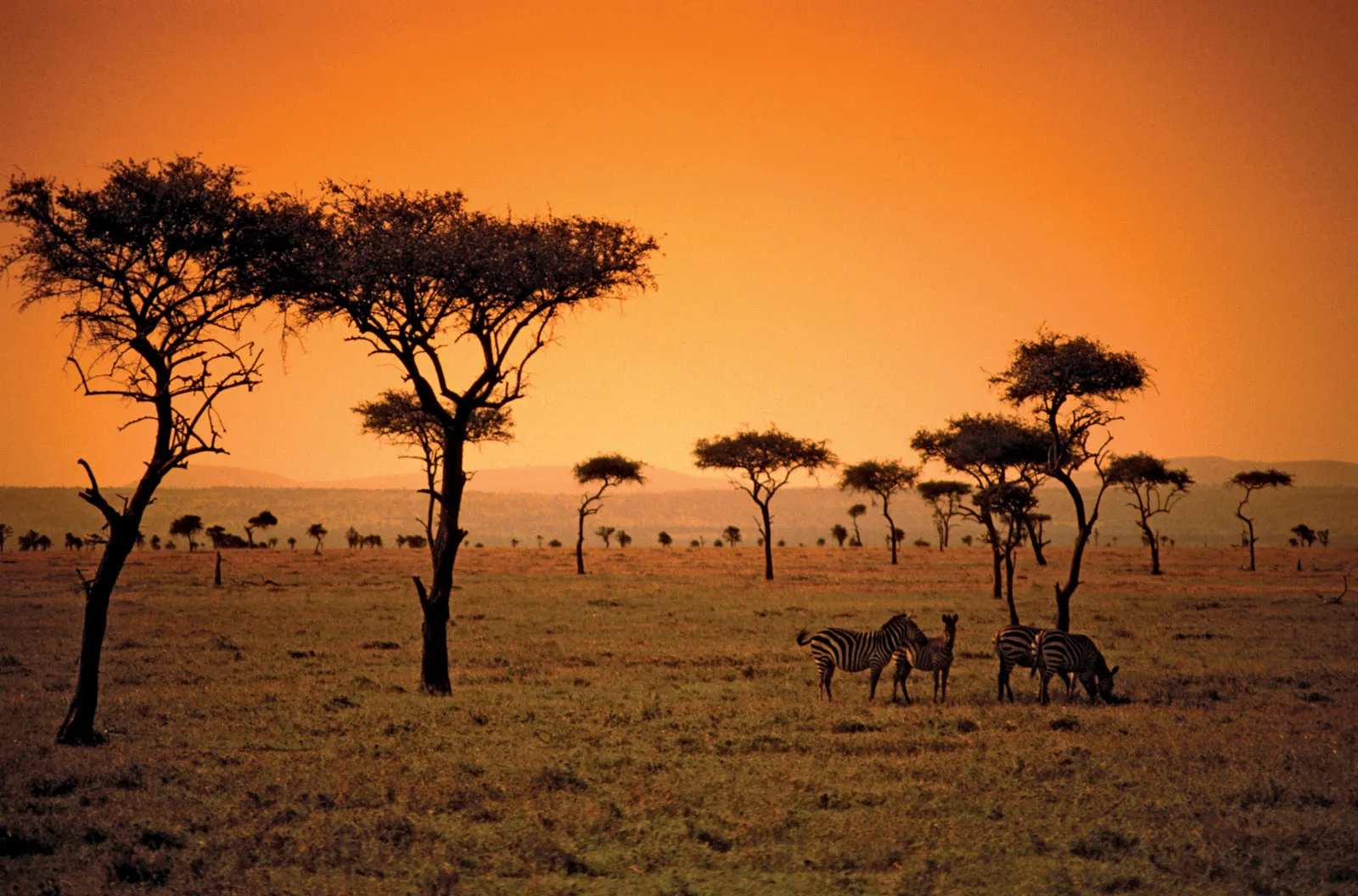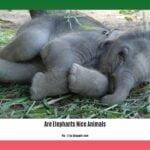Step into the extraordinary realm of savannas, a captivating tapestry where grassy plains meet majestic trees. These vibrant ecosystems buzz with life, from colossal elephants roaming the lands to countless creatures adapted to thrive in this unique environment. Savannas are more than just picturesque landscapes; they are crucial players in the Earth’s systems, influencing everything from climate regulation to biodiversity. Immerse yourself in the savanna’s intricate web of life and uncover the wonders of this vital habitat.
Savanna Important Facts
Imagine an endless expanse of golden grasslands, dotted with clusters of trees and the occasional lone acacia silhouetted against the setting sun. This is the savanna, a vibrant ecosystem teeming with life that stretches across continents, gracing parts of Africa, Australia, India, and South America. But what makes savannas so special? Let’s explore some fascinating facts about these incredible places:
- A Paradise for Plant-Eaters: Savannas are essentially giant salad bars for herbivores—animals that primarily eat plants. Lush grasses provide an endless buffet for a diverse cast of characters, from zebras and wildebeest to graceful antelopes and more. In fact, savannas boast the greatest variety of herbivores found anywhere on Earth!
- Home to Megafauna: When you think “African savanna,” iconic giants probably come to mind—and for good reason! This is the land of the elephant, the largest land animal on the planet, lumbering across the plains. Then there’s the giraffe, stretching its neck to impossible heights to munch on leaves. But the savanna’s celebrity roster doesn’t stop there. Lions, stealthy cheetahs, and massive rhinoceroses all call these grasslands home.
- Ecological Bridge: Savannas are more than just pretty landscapes; they act as essential bridges between different ecosystems, serving as the transition zone between dense forests and arid deserts. The plants here are masters of adaptation, able to thrive in both wet and dry seasons, which helps maintain a rich tapestry of life and even plays a role in regulating the climate.
- Symbiotic Relationships: Savannas are teeming with examples of symbiosis, where different species depend on each other for survival. One amazing example is the relationship between acacia trees and ants. The ants act like tiny bodyguards, protecting the trees from hungry herbivores. In return, the trees provide the ants with a safe haven and a source of food.
- The Power of Fire: While we often think of fire as destructive, it’s actually an important force in shaping savanna ecosystems. Natural fires, often sparked by lightning strikes, help to maintain the delicate balance between grasslands and trees. Think of it like nature’s way of hitting the reset button, preventing trees from taking over and ensuring that grasses can thrive.
- Artistic and Cultural Inspiration: The beauty and wonder of the savanna have captivated humans for centuries. The wide-open spaces, the incredible wildlife, and those breathtaking sunsets have inspired countless works of art, stories, and songs. There’s just something about the savanna that speaks to our souls, reminding us of the power and majesty of the natural world.
While we’ve learned a lot about savannas, there’s still much to discover. Scientists are constantly studying the complex interactions between plants, animals, and the environment in these dynamic landscapes, seeking to understand these vital ecosystems better.
What Defines a Savanna- And Where Can They Be Found?
We’ve already touched upon some key features of savannas, but let’s dive a little deeper into what makes these landscapes so unique. Imagine a place where vast grasslands stretch as far as the eye can see, dotted with clusters of trees, their branches reaching up like welcoming arms. That’s the essence of a savanna – a beautiful blend of grassy plains and scattered trees, creating a landscape that’s both open and alive. This unique combination of features fosters biodiversity and creates a fascinating mosaic of life.
One of the defining characteristics of a savanna is its distinct wet and dry seasons. Savannas typically occur in regions where rainfall is seasonal, with periods of heavy rain followed by extended dry spells. This cyclical pattern of precipitation plays a crucial role in shaping the vegetation structure and influencing the types of animals that can thrive in these environments.
The climate’s influence on the savanna’s “dress code” is evident in the spacing of trees. Unlike dense forests where trees form a closed canopy, savanna trees are spread out, allowing sunlight to reach the ground. This open canopy structure creates ideal conditions for grasses to flourish, forming the characteristic vast grasslands that define these ecosystems.
The scattered trees and abundant grasses create a unique habitat for a diverse array of creatures. The savanna becomes like a giant, open-air buffet, attracting grazers like zebras and gazelles, which, in turn, attract predators such as lions and cheetahs. This intricate web of life is sustained by the savanna’s unique combination of environmental factors.
You might be picturing the African savanna now, and rightfully so—Africa boasts some of the most iconic savanna landscapes, like the Serengeti, where massive herds of wildebeest migrate across the plains. But savannas aren’t limited to Africa alone. They’re like nature’s explorers, popping up in pockets of South America, Australia, and even parts of Asia.
Think of the Llanos of Colombia and Venezuela, with their vast, flat grasslands, or the cerrado of Brazil, where twisted, fire-resistant trees dot the landscape. Each of these savannas has its unique flavor, shaped by its location, climate, and the plants and animals that call it home.
Explore the enchanting realm of the savanna further by discovering the diverse flora and fauna that thrive in harmony within these ecosystems. Delve into the fascinating stories behind the intriguing inhabitants and uncover fun facts about the savanna that will change your perspective on this captivating landscape.
What Animals Make the Savanna Their Home?
Now that we’ve set the scene, let’s meet the neighbors! The savanna isn’t just a pretty backdrop; it’s a bustling community filled with all sorts of amazing creatures, each with its own part to play. Think of it like a big city, but instead of skyscrapers, you’ve got acacia trees, and rush hour involves a herd of zebras instead of cars!
The A-List Celebrities
First up, we’ve got the superstars, the ones you see on all the postcards! Lions, with their impressive manes, are often seen as the rulers of the savanna. These apex predators sit atop the food chain, and their roars echo across the grasslands. Then there’s the cheetah, a blur of spotted fur that can outrun just about anything on four legs. These speedsters are a sight to behold as they chase down their prey. And of course, no savanna safari would be complete without the African elephant. These gentle giants are like the architects of the landscape, using their massive size and strength to shape their environment. And let’s not forget the zebras, their stripes dazzling as they graze the plains in herds that stretch as far as the eye can see.
The Supporting Cast
But it’s not all about the big names. The savanna is teeming with equally fascinating creatures, each with its own unique story. Take the giraffe, for example. Their long necks aren’t just for show; they allow them to munch on leaves high up in the trees that other animals can only dream of reaching. Then there’s the wildebeest. Thousands strong, these nomadic herbivores embark on incredible migrations across the savanna in search of fresh grass, a spectacle that has to be seen to be believed. And let’s not forget the hyenas. Often misunderstood, these intelligent and social animals play a crucial role as nature’s cleanup crew, their scavenging helping to keep the ecosystem in balance.
Life on the Savanna: It’s Not Easy Being Green (or Spotty, or Striped…)
Living on the savanna isn’t a walk in the park. It’s a land of scorching sun, limited water, and fierce competition. Over time, the animals here have developed some pretty incredible adaptations to thrive in this challenging environment. Take the lion’s camouflage, for instance. Their tawny coats blend seamlessly with the dry grasses, allowing them to stalk prey undetected. Or the cheetah’s incredible speed, honed over generations to make them the ultimate pursuit predators.
Elephants, with their massive size and thick skin, are practically built-in tanks, able to withstand the harshest conditions. And those zebra stripes? Some scientists believe they might help to confuse predators or regulate body temperature – the jury’s still out on that one. It just goes to show that even the smallest details can make a big difference when it comes to survival on the savanna.
The Savanna: A Never-Ending Story
The savanna is a complex web of life, a delicate balance constantly shaped by the interplay between predator and prey, climate and resources. And while we’ve learned a lot about this incredible ecosystem, there’s still so much more to discover. New research is constantly shedding light on the intricate relationships between savanna inhabitants and the challenges they face in a changing world. So the next time you see a picture of a lion lounging in the grass or a herd of zebras thundering across the plains, remember that you’re only glimpsing a small part of a much larger story, one that continues to unfold with each passing season.
How Does Savanna Climate Influence its Ecosystem?
We’ve talked about what makes a savanna a savanna, but how does the climate actually shape the ecosystem? It all boils down to those extreme seasons – periods of intense rainfall followed by long stretches of practically no rain. This cycle, my friend, is the engine driving everything in the savanna.
When the rains hit, it’s like someone hit the “fast-forward” button on plant life. Grasses shoot up, leaves unfurl – it’s a buffet out there for herbivores like zebras and gazelles. This abundance also supports a whole chain of predators, from lions to cheetahs, who follow the herds.
But when the dry season sets in, things get real. Water sources dwindle, and those lush grasslands transform into a sea of dry stalks. This is where the savanna’s resilience shines through. Many animals, sensing the change, embark on epic migrations, following ancient routes in search of water and fresh grazing. Others, like some reptiles, enter a state of estivation (think hibernation, but for hot weather), waiting it out until the rains return.
This back-and-forth between wet and dry seasons creates a fascinating dance between the living and non-living parts of the savanna. The types of plants that can survive – mostly grasses with a few scattered trees – are directly influenced by the amount of rainfall and the frequency of fires, which are more common in the dry season. These fires, while seemingly destructive, actually play a vital role in maintaining the savanna. They clear out dead vegetation, making way for new growth when the rains return.
Interestingly, some experts believe that savannas might be a secret weapon against climate change. All that plant life isn’t just pretty to look at; it’s busy sucking carbon dioxide out of the atmosphere. Scientists suggest that savannas play a crucial role in absorbing and storing carbon, which helps to regulate our planet’s climate.
However, there’s still a lot we’re learning about these complex ecosystems. For example, scientists are researching how climate change itself will impact savannas in the future. Will shifting rainfall patterns lead to more droughts or more fires? How will these changes affect the animals that depend on the savanna for survival?
These are just a few of the questions that researchers are working to answer, highlighting how much more there is to discover about these incredible places. Gaze out at the boundless horizons of the savanna, realizing that grasslands never have trees, creating a distinct tapestry of nature that continues to fascinate and inspire.
- China II Review: Delicious Food & Speedy Service - April 17, 2025
- Understand Virginia’s Flag: History & Debate - April 17, 2025
- Explore Long Island’s Map: Unique Regions & Insights - April 17, 2025
















